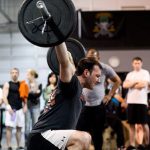Home / Shoulder Surgery / Arthroplasty (joint replacement) / Reverse Total Shoulder Arthroplasty (RTSA)
Glenohumeral (shoulder) arthritis occurs when the protective cartilage covering the ends of the bones at the shoulder joint, the glenoid (socket of the shoulder joint) and the humeral head (ball of the shoulder joint on the end of the upper arm bone), wears out. This cartilage wears out from excessive joint loading over time in patients genetically susceptible to arthritis or following injury. Shoulder pain and limitations occur as the worn bony ends of the joint grind together and cause mechanical symptoms and inflammation.
The most common indication for a reverse total shoulder arthroplasty is painful rotator cuff arthropathy (shoulder arthritis plus a large rotator cuff tear). Significant or massive rotator cuff tears that are left untreated can result in the humeral head migrating upward and moving closer to the acromion (roof of the shoulder joint). This abnormal position causes the cartilage covering the bony surfaces to deteriorate (arthritis), often resulting in significant pain and physical limitations. Other indications that warrant a reverse total shoulder arthroplasty are those patients with painful range of motion associated with large or irreparable rotator cuff tears or severe fractures of the proximal humerus in older patients.
Learn More
 Repeated shoulder dislocations and surgeries don’t sideline former rugby player Shawn Bastic
Repeated shoulder dislocations and surgeries don’t sideline former rugby player Shawn Bastic
Dr Steven Chudik founded OTRF in 2007 to keep people active and healthy through unbiased education and research. Click to learn about OTRF’s free programs, educational opportunities and ways to participate with the nonprofit foundation.
1010 Executive Ct, Suite 250
Westmont, Illinois 60559
Phone: 630-324-0402
Fax: 630-920-2382
4700 Gilbert Ave, Suite 51
Western Springs, Illinois 60558
Phone: 630-324-0402
Fax: 630-920-2382

© 2024 © 2019 Copyright Steven Chudik MD, All Rights Reserved.
